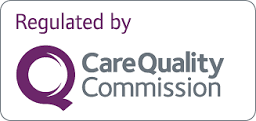
We’ve all faced challenges during covid and some of us are still taking time to re-adjust. One of those challenges was having to wear face masks. Although it was an important tactic in preventing the spread of the virus, it presented a unique difficulty to those who suffer with hearing loss. Prior to face masks, hearing loss was not something many people were aware of due to its gradual onset over several years.
However, what is the exact link between face masks and an impedance in communication especially for people with hearing loss? We say that hearing is a brain activity – meaning that the ears deliver sound information to the brain via electrical impulses, and it is then within the brain where those electrical impulses are interpreted, translated and filtered. For people with hearing loss, fewer sound information reaches the brain and as a result the brain shifts its operating mode to compensate for that by filling in the gaps. It does that with the help of visual cues such as lip reading or facial expressions, which were unfortunately not present with the use of face masks. (Yi et al., 2021)
To aid auditory information whilst conversing, clear face masks became more prevalent during the time of COVID. These, however, did not pose a permanent solution for hearing loss and many people began to explore the route of hearing aids to help them manage. However, seeking just any hearing assistance is not enough to rehabilitate the impairment of hearing loss. For hearing aids to provide the necessary benefit, it is crucial that they are programmed correctly to a hearing loss prescription using Real Ear Measurements. The idea is to deliver frequency specific sound information to the brain, taking the extra load of filling in the gaps off the brain and hence reducing listening effort (Alexander, 2021).
This not only helps with face mask situations but also improves speech clarity in other difficult communication environments like restaurants, team meetings and lectures. In simple terms,correctly programmed hearing aids are a way of connecting you back to the world.
References

Pindrop Hearing Limited is registered in England and Wales No 05909296 Trading address 41 Harley Street, London, W1G8QH. Pindrop Hearing Limited acts as a credit broker and only offers credit products from Tabeo.
Pindrop Hearing Limited is authorised and regulated by the Financial Conduct Authority. Our registered number is 796909. Credit subject to age and status.
© Pindrop Hearing 2025
£100 M&S Voucher
We'll also recycle your old hearing aids to the Starkey Foundation.